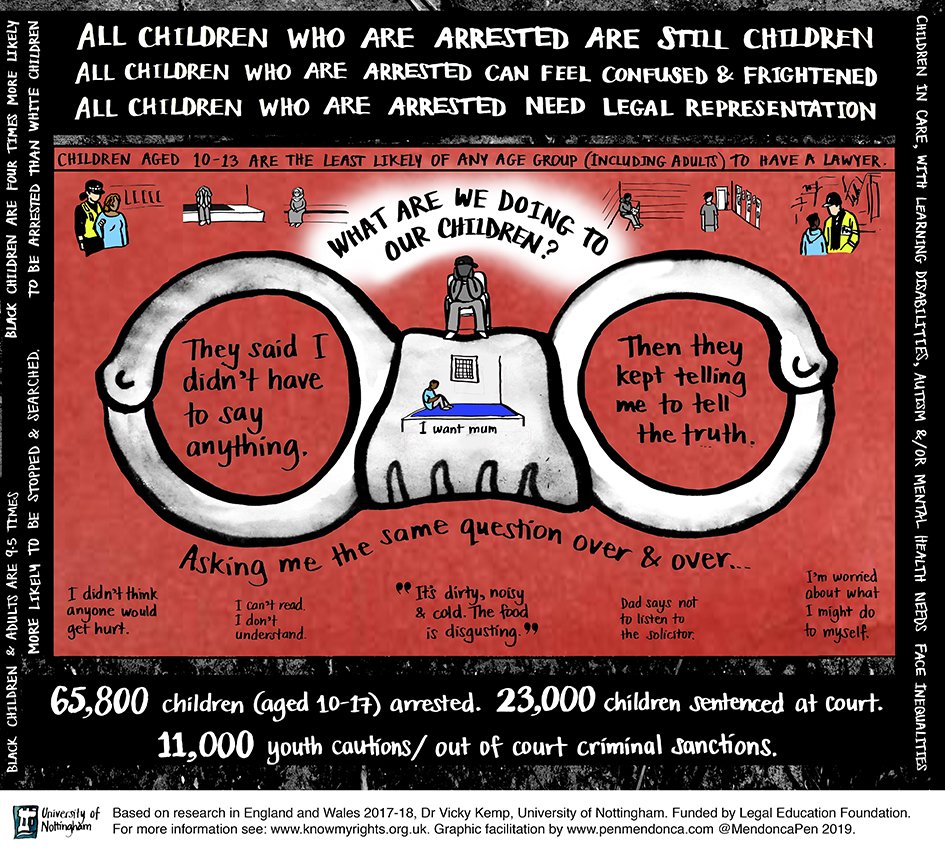Nuffield Foundation funded project – Examining the impact of PACE on young suspects
This project aims to examine the detention and questioning of children aged 10 to 17 years by police in England and Wales and, in particular, the extent to which the Police and Criminal Evidence Act 1984 (‘PACE’) supports the need for ‘child-friendly justice’. PACE provides basic safeguards for suspects in police investigations but, apart from the mandatory requirement for an ‘Appropriate Adult’ (AA) to be involved when dealing with under 18 year olds, there are no other required adaptions concerning age. This means that existing policy provides only an adult-centred approach to the management of children in police custody, and police officers must take it upon themselves to try and adapt their practices to meet the very different needs of child suspects. There is no specialist training required of the police and lawyers that deal with child suspects, neither is a different model required for interviewing young suspects – even though this is the case when interviewing children as victims and/or witnesses. Children’s differing cognitive and emotional needs from adults are acknowledged, yet children who are subject to proceedings in which they are accused are not provided the same access to information or engagement in the criminal justice process as those appearing in other capacities. This has serious implications for children’s basic human rights (such as their right to a fair trial and right to be engaged in proceedings that concern them).
This study follows on from the Legal Education Foundation study and, arising out of interviews with children and young people, the following graphic was commissioned.

The study will involve observing children when brought into police custody and interviewing all those involved in the police questioning of young suspects.
The goals of this study are to:
Provide/increase the knowledge base concerning the management and experiences of child suspects in police custody;
Improve the management and engagement of children in the early stages of criminal justice processes;
Overcome the practical and ethical challenges that have deterred many researchers from pursuing the opinions of vulnerable child suspects and obstructed children from sharing their experiences and needs during detention.
Digital legal rights for suspects
An article has been published on detainees’ legal rights, and potential barriers to access legal advice – see V. Kemp, 2020, ‘Digital legal rights: Exploring detainees’ understanding of their right to have a lawyer and potential barriers to accessing legal advice’, Criminal Law Review 129-147. Penelope Gibbs (Transform Justice: 13 February 2020) has written a Blog commenting on issues arising out of this article – “Looking a gift horse in the mouth”.
A second article, ‘Authorising and reviewing detention’ has been accepted for publication in July’s edition of the Criminal Law Review.
An earlier report, arising out of the research interviews with 100 detainees, was published in 2018: ‘Digital legal rights for suspects: Users’ perspectives and PACE safeguards‘. See Penelope Gibb’s blog (2 December 2018) on this report – “Like being in the dog pound: the reality of police custody”.
Digital legal rights for young suspects
Funded by the Legal Education Foundation, 95 children and young people have been interviewed about their legal rights as suspects. This included vulnerable young people and those over-represented in the criminal justice system: young people in care, people with learning difficulties and/or mental health problems, and BAME individuals. The study highlights the current adult-centred approach adopted when dealing with children as suspects and the findings are intended to inform changes in policy and practice in requiring a child-centred system of justice.
Arising out of the interviews with children and young people, Vicky is working with Lesley Laver, a psychologist in designing an App to inform young suspects of their legal rights, test for understanding, and to screen for vulnerability. These digital resources will be co-designed by children and young people involved in the criminal justice system.
